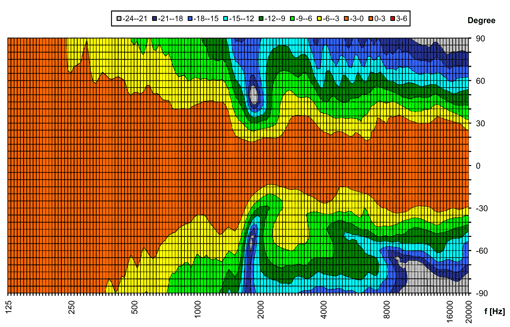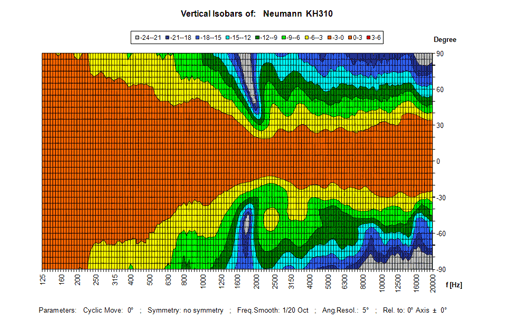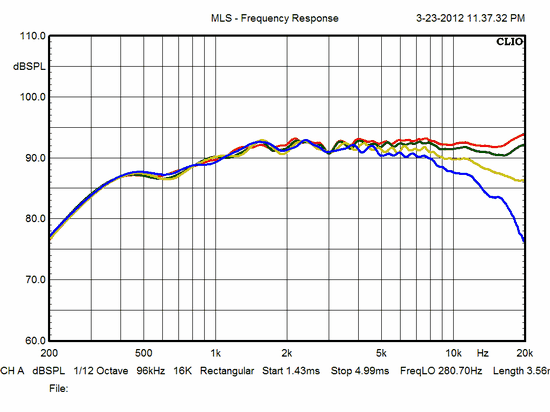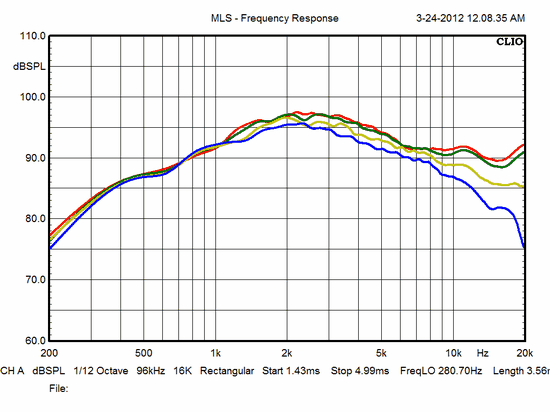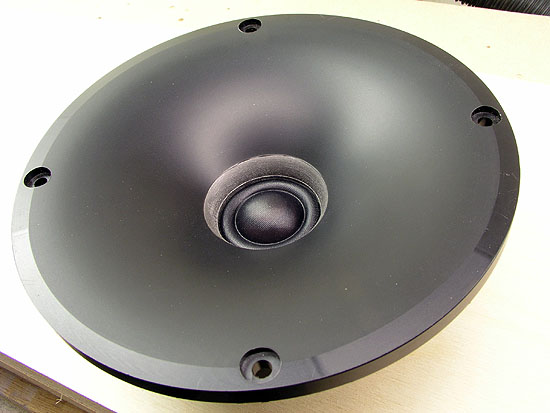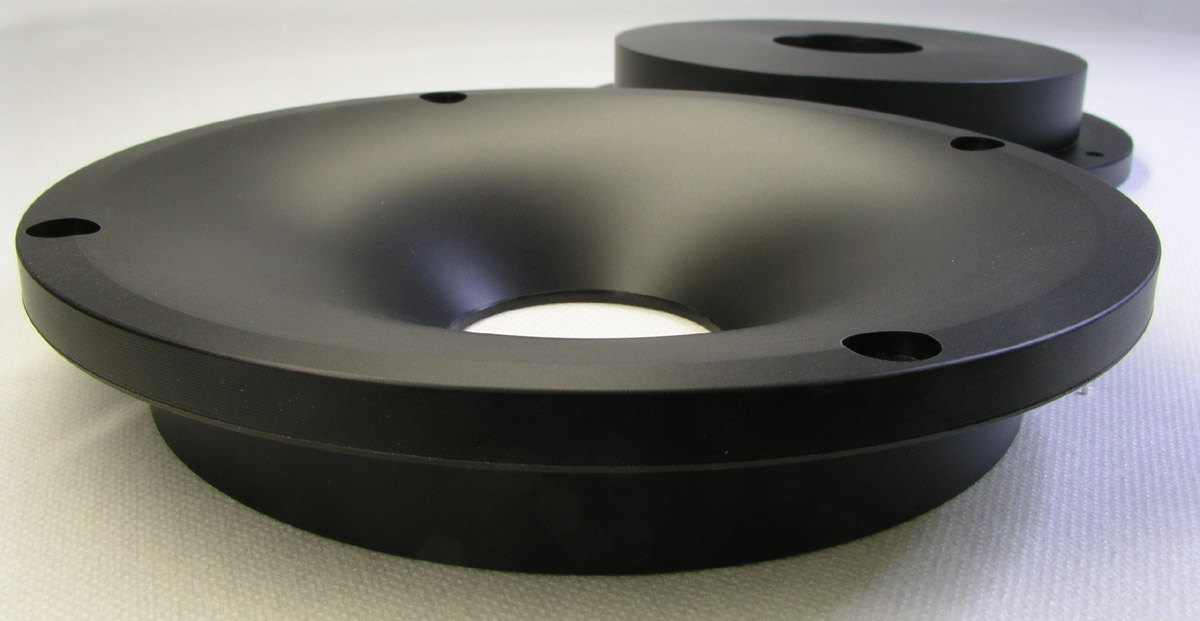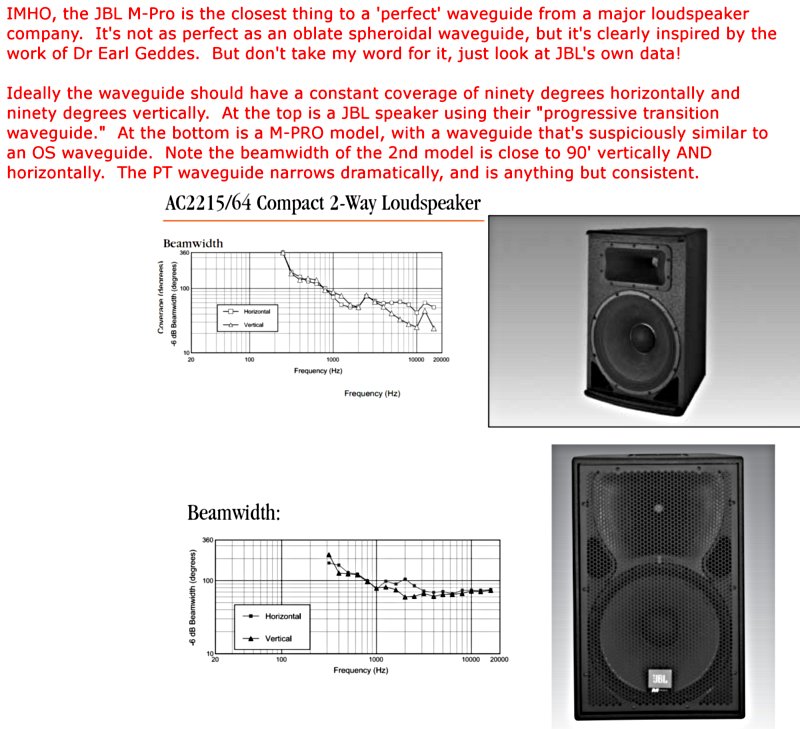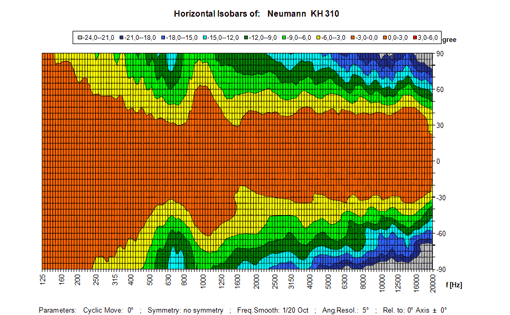I can tell you are a serious man, and I take you very seriously. However, the conversation on this subject between me and another member has gotten a bit more heated than I'm comfortable with.
To mitigate that, I'm going to ignore attempts at personal insults from those who don't seem to appreciate that members of this form are forming mutually respectful long-term relationships, and some of them already exhibited a desire to meet in person over a beer or two.
Also, I will try my best to add a bit of humor to my replies to those who are keen to maintain a polite professional discussion. I very much appreciate the opportunity to communicate directly with professionals in the field, as well as with advanced enthusiasts.
The answer would be to measure. Make a few measurement under different vertical angles with ports blocked vs without. I'm pretty sure the off-axis responses don't change a jota, at least not any more than what can be expected from the slight geometry change alone -- the blocked ports present a slightly different boundary for the sound field and some minor change in diffraction will occur.
Oh well, it did come to blocking the ports with socks

A serious question: how slight is "slight"? A 1.5 db change in 3rd to 5th harmonic of a female singer voice may change the perception of her vocal delivery from happy and relaxed to somewhat anxious or angry.
Remember, to get some directivity from port leakage its contribution must be the same order of magnitude than the signal from the cone, something we want to avoid as much as possible to begin with.
Here I disagree, if by "order of magnitude" you mean 10 dB. Going from 1.5 SPL dB to percentage of pressure gives 109%. So, an un-dampened port with an area of 9% relative to the woofer area can generate noticeable differences at some frequencies and some locations in space. In certain cases, this could be interpreted as changes in directivity.
Leakage is not at all our friend and high leakage cannot be deteministically shaped to fulfill the magnitude and notably strict phase requirements so that something like a controlled wideband directivity shaping could ever be obtained.
Designers of D&D 8c appear to think that leakage is not an obstacle, but rather a friend of what they call "Completely accurate music reproduction"

Seriously though, I agree with what you are saying.
So, please simply forget that thought, it doesn't happen.
I positioned my KH120s per the owner manual suggestions, angled them down 15 degrees, and forgot about their quirks at negative vertical angles: whatever happens there is sufficiently dampened by carpet, soft furniture, books etc. So, from usability perspective, it indeed doesn't noticeably happen in the practical context of my use.
Going back to science. Human hearing system is attuned to compensate for smooth high frequencies attenuation in human voices. One example would be hearing from an angle a person speaking or singing. Another would be hearing a voice through a foliage.
So, as long as, at given vertical and horizontal angles, the perceived frequencies balance could be interpreted by the hearing system as a natural phenomenon, the illusion of hearing actual voice is maintained.
The above is actually a very strong argument in favor of Dr. Toole et al. findings, from the psychoacoustics perspective. A smooth attenuation of high frequencies at increasing angles is natural, and thus is preferred by most listeners.
If, however, the balance shifts the other way, like what I call "twirly" 1KHz-2KHz region in the KH120 vertical polar map, instead of smooth attenuation we are getting rather severe humps and dips at vertical angles beyond approximately -30 degrees.
A hump in the vocal region, which is roughly analogous to a resonance, is very noticeable. It changes the timbre, thus perceived emotional state of the singer, and thus distorts the artistic intent. A dip may have an effect of a vocalist getting robbed of her or his emotion, thus also distorting the artistic intent.
What I've noticed when the KH120 was installed too high were annoying changes in timbre balance on some songs, correlated with seemingly small changes in my head position. When KH120 is positioned properly, this effect is utterly absent. Or perhaps being a man who has been married for over quarter of a century, I just may be attuned to emotions expressed by a female voice more acutely than the average population

